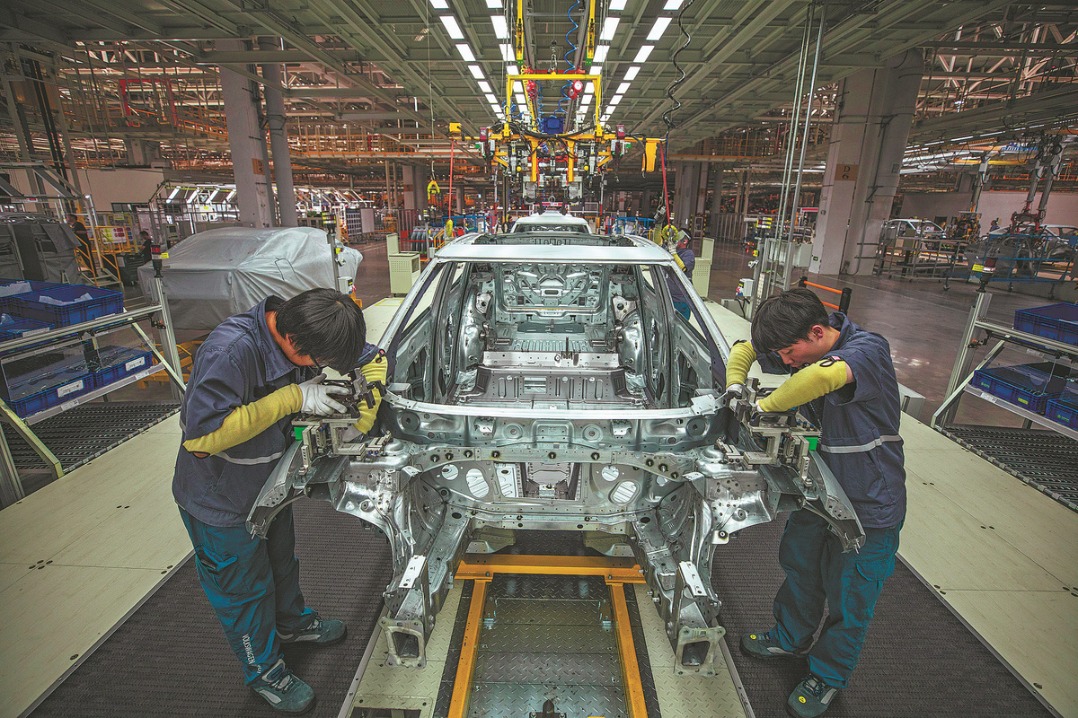Six sense


SUN XIAONING/FOR CHINA DAILY
China and the Central Asian Countries are effectively building a regional community with a shared future
The year of 2022 marks the 30th anniversary of the establishment of diplomatic relations between China and the Central Asian countries. At a virtual summit held in January 2022 to celebrate this 30th anniversary, President Xi Jinping delivered an important speech, proposing new goals and charting new directions for building a closer China-Central Asia community with a shared future.
China and the five Central Asian countries, being geographically connected, now share similar positions on international affairs and regional issues. The prosperity and security of this region is related to the common interests and development prospects of all six countries. Under the banner of building a community with a shared future for mankind, China and the five Central Asian countries should cooperate in the following six aspects.
The first is to build a community of development with a shared future for China and the five Central Asian countries. After over 40 years since it launched reform and opening-up, China is now the world's second-largest economy, with its per capita GDP reaching $12,551 in 2021. President Xi proposed the Global Development Initiative in September in 2021, and buoyed by new opportunities and momentum for growth, the five Central Asian countries can work with China to build a community of development with a shared future, and jointly draw a blueprint for common development for the next 30 years.
Second, the two sides can jointly build a community of health for all. At the China International Import Expo in November 2022, an alliance for China and Central Asia in the field of medical care and health was established. The founding members of the alliance will constitute a joint force to promote medical and health cooperation between China and Central Asia in the future.
China's bioengineering and pharmaceutical sector is growing rapidly. The pharmaceuticals produced in China, compared with those of developed economies, are characterized by their affordable prices, high quality and high index of safety. Many innovative products are also emerging. More importantly, many multinational companies in China have transferred their Phase I and II clinical trials to China, as well as their original innovation, research and development arms. China has led the international community in the R&D, production and trade of innovative medicines. The five Central Asian countries can benefit from sharing resources with China in terms of healthcare.
Third, it is important to build a community with a shared future between China and the five Central Asian countries with regard to infrastructure. The joint advancing of the Belt and Road Initiative has secured major progress over the past nine years, with landmark achievements attained in infrastructure connectivity in particular. At present, a preliminary framework of projects involving six corridors, six routes, multiple countries and a number of ports have been established. Among this framework are the China-Pakistan Economic Corridor, China-Europe freight train services, the China-Laos Railway, the Jakarta-Bandung High-Speed Railway, the Mombasa-Nairobi Standard Gauge Railway, and the China-Thailand Railway, which is still under construction.
There is still a big gap between China and the five Central Asian countries in connectivity, which represents opportunities and broad room for cooperation.
For example, the construction of the China-Central Asia transport corridor can be accelerated, a move that could make the region the fastest growing area in infrastructure construction. The construction of the China-Kyrgyzstan-Uzbekistan railway, which was on hold for 25 years, has now started. Upon its completion, the railway can shorten the travel time by seven to eight days compared with the original Eurasian land bridge. It will directly benefit the three countries as well as neighboring countries. The project will reduce costs and improve the efficiency of the China-Europe freight train services.
Fourth, China and the five Central Asian countries need to build a community with a shared future in cyberspace.
The acceleration of a new round of technological revolution and industrial transformation has given more prominence to the importance of network interconnection. Building a community with a shared future in cyberspace is now in the pipeline between the two sides. China has made remarkable progress in the digital economy, digital ecology, and the development of cyberspace. The construction of new infrastructure that will serve as a pillar to the building of a community with a shared future in cyberspace, including 5G and 6G, Beidou Navigation Satellite System, supercomputing capabilities, big data and artificial intelligence, has put China in a leading position in the world.
As of September 2022, the number of 5G base stations being built in China had reached 2.2 million, with a total of over 11 million base stations already completed. The popularity of 5G in China, the nation's supercomputing capabilities and the Beidou system are no inferior to those of the United States. China has signed service agreements on services provided by the Beidou system with more than 140 Belt and Road participating countries. Therefore, there is broad space for building a community with a shared future in cyberspace.
Fifth, it is imperative to build a community with a shared future for man and nature.
The latest edition of the Global Biodiversity Outlook noted that the world has only attained six of the 20 goals proposed previously, and there are still grave threats to global biodiversity. China and the five Central Asian countries can lead the world on cooperation in this front. China's ecological and environmental governance practices are worth borrowing, and the two sides have a lot of room for cooperation on new energy, clean energy, and ecological restoration and protection.
Sixth, China and the five Central Asian countries need to build a community with a shared future for peace and security.
The security situation in Central Asia is highly complex, with many unstable and uncertain factors, and the deterioration of the external environment has further amplified internal conflicts. China and the Central Asian countries have conducted increasingly extensive security cooperation, and the two sides have strengthened bilateral interactions in a more targeted manner. China and the five Central Asian countries have remained committed to following a path of peaceful development, serving as a shield for peace and security and contributing to the peaceful development of the global community, which is the reason why they share the same position on international affairs.
The Global Security Initiative was proposed by President Xi at this year's Boao Forum for Asia. This initiative proposes common, comprehensive and sustainable security, and calls for efforts to jointly foster a balanced, effective and sustainable security architecture. China and the five Central Asian countries have made key contributions to the peace, stability, development and prosperity of the region and the world.
The author is chief economist at the China Center for International Economic Exchanges. The author contributed this article to China Watch, a think tank powered by China Daily. The views do not necessarily reflect those of China Daily.
Contact the editor at editor@chinawatch.cn.
































